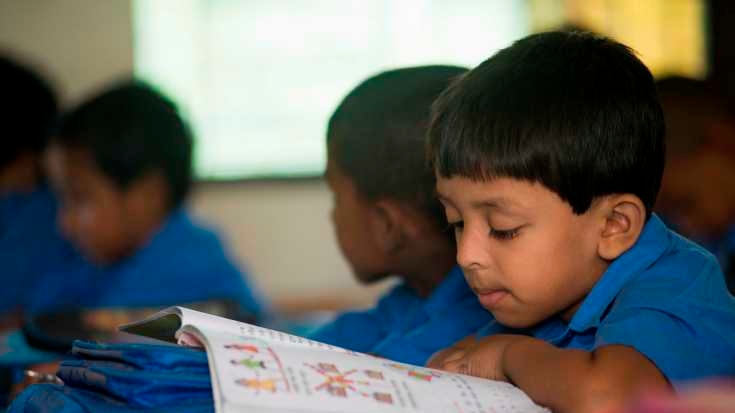Education provides children with the basis for attaining dignity, better livelihoods, and a better quality of life when they grow up. By developing children’s latent capabilities, it contributes to a skilled workforce and acts as a powerful tool for reducing poverty and boosting economic growth in the future. The Third Primary Education Development Program (PEDP III) provides support the government in improving the quality of education as well as increasing the net enrolment and completion rates in primary education.
Challenge
Bangladesh has made remarkable progress in primary education. Access to primary education is almost universal. The sector is large with more than hundred thousand institutions, about 16.5 million students and more than 3 hundred thousand teaching staff. Despite the progress, only close to 70 percent of the children enrolled complete grade 5 and among them only 44 percent go on to the secondary level. Children drop out mainly as they cannot afford tuition, books and other educational materials or live too far from the school. The quality of education is also a concern. Many schools are still overcrowded, teacher qualifications and motivation remain low and exams test mostly memory recall.
Approach
PEDP III builds on the experience of previous programs. It aims to enhance the quality of teaching in Bangladesh, and to reduce disparities in access and learning in primary education. PEDP III stands out from previous programs as its financing is linked entirely to results being achieved on the ground. Funds are disbursed when key targets, known as Disbursement Linked Indicators (DLIs), are met. All nine Development Partners (ADB, AusAID, CIDA, DFID, EU, JICA, SIDA, UNICEF and the World Bank) have agreed with the Government to a common results framework. The DLIs cover nine areas which are a subset of the Government’s program for primary education. The DLIs for quality enhancement cover: development of an 18- month diploma program and teacher training in this program; development and incremental introduction of competency based examinations; merit based teacher and head teacher recruitment and timely distribution of textbooks (within a month of the start of the academic calendar), including an updated curriculum. The DLIs aiming to support reduction in disparities include the widespread introduction of preprimary education especially in disadvantaged areas, needs based infrastructure development to reduce overcrowding and to improve the quality of the facilities and school level planning. DLIs are also set for enhanced sector financing and effective monitoring. This new method of funding not only ensures that the program targets are met, but also seeks to make the achievements sustainable.
Results
- 96.8% primary school enrolment rate and 73.8% completion rate.
- Gender parity achieved in primary education.
- More than 13,000 trained teachers recruited.
- 100 million text books distributed by first month of the academic years to more than 85% schools.
- 25% of the primary completion exam converted to competency based.
- Out of the 9 DLIs for each year, 8 achieved for the first year and 7 for the second year to date.
Towards the Future
As a highly innovative sector-wide program PEDP III is expected to contribute to Bangladesh’s long term objective of human capital development for sustaining poverty reduction and economic growth. Over time all alternative, second-chance education type interventions are meant to be mainstreamed into the regular PEDP program.

